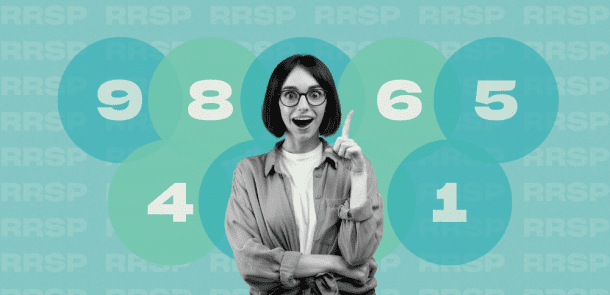Last updated on February 27, 2025
If you dread tax season, you’re not alone. Whether you’re expecting a refund or a tax bill, just getting started can be the hardest part.
The 2023 personal tax return filing deadline is coming up on April 30, 2025 (or June 16, 2025 if you’re self-employed, but you must pay any balance owing by April 30).
Here’s the good news:
We have 8 tips ready to help make doing your taxes quicker and easier than ever before:
1. Don’t put it off
Waiting until the last minute will just stress you out (and could lead to costly mistakes.) Plus, filing late can result in hefty penalties and interest charges, and could mean possible delays or interruptions in your benefit and credit payments.
Even if you’re a low or zero-income earner, it’s still worth filing a return. You may be eligible for tax credits like the GST/HST credit and other education credits. Filing also allows you to build Registered Retirement Savings Plan (RRSP) contribution room, which can benefit you in the future even if you can’t afford to contribute now. Here are some key dates for 2024 tax year:
Filing dates for 2024 taxes:
- April 30, 2025: deadline to file your taxes
- June 16, 2025: deadline to file your taxes if you or your spouse or common-law partner are self-employed
2. Start preparing early
Make things easier for yourself with a checklist of the documents you’ll need to prepare your return (this one from the Canada Revenue Agency (CRA) is a good start).
As you receive important statements and receipts, whether digital or hard copy, file them into a designated tax folder — and check them off your list.
Crossing items off will also help you see what’s missing, and what you might need to track down. If you need a duplicate receipt, it’s better to ask sooner rather than later.
3. Gather your documents
To make sure you’re calculating your income and deductions correctly, you’ll need to review the various tax information forms that your employer and financial institutions provide.
Here’s a list of the most common statements, who issues, them and when you should expect them:
| Statements | Who issues it | What it is | Date to expect it |
| RRSP Contribution receipt | Your credit union or financial institution | Statement of all RRSP contributions you made between March and December 2024. | January 27 |
| T5 slip | Your credit union or financial institution | Depending on the investments you hold, you’ll receive statements of income for your personal, joint or business account(s). | February 17 |
| T4 slip | Your employer | This slip shows how much income you earned, and how much in tax you’ve already paid for 2024. | February 29 |
| RIF, Spousal RIF, LIF | Your credit union or financial institution | This statement confirms the amounts that have been withdrawn from these accounts and have been reported to the CRA. | February 17 |
| RRSP contribution receipt | Your credit union or financial institution | Statement of all RRSP contributions made during the first 60 days of 2024. | March 26 |
Don’t have a key piece of information before the tax deadline? Use your best guess and file anyway. You can always submit an amended return once you have all your information.
4. Report all your income
As a Canadian resident, you’re required to report all income from all sources, both in and outside of Canada. If you’re working for an employer, that’s relatively simple — your income is reported on your T4.
But if you have a side hustle (whether that’s freelance work, running your own small business or collecting tips at a second job), you’ll also need to report this income — or risk additional tax assessments and penalties.
5. Check out tax breaks and deductions
Want to lower your tax bill or increase your tax refund? It’s in your best interest to take advantage of every claim and deduction that’s applicable to you. If you’re not sure what you might be eligible for, the CRA website has a list of government benefits, credits and special allowances that could help you save money.
Here are some important tax deductions, credits and expenses you may want to consider:
- Medical expenses
- Moving expenses
- Student loan interest
- Disability deductions and credits
- Childcare expenses
- Employment expenses like union or professional dues, or professional certification courses
And if work from home or are self-employed, you may be able to claim a home office deduction.
6. Max out your RRSP contributions, if you can
Keep in mind that every dollar you contribute to an RRSP comes off your taxable income. So, for example, if you make $60,000 and contribute $5,000 of it to an RRSP, you’ll only be taxed on $55,000 — saving you $1,410 off your tax bill for 2024.
For 2024 your annual RRSP contribution limit is 18% of the earned income you reported in the 2023, up to a maximum of $31,560. You can find your exact RRSP contribution limit on your latest notice of assessment (or reassessment) by logging into your Canada Revenue Agency (CRA) account online or by calling the CRA at 1-800-267-6999.
Consider using the Government Sign-in service, which allows you to access your personal CRA account (along with 80 other Government of Canada websites) without having to keep track of yet another user ID and password.
Keep in mind that March 3, 2025 is the final date for your RRSP contributions to be eligible for the 2024 tax year.
7. Go DIY or hire a pro
You’ve got three choices when you’re ready to file your return: file a paper return, do it yourself by using tax preparation software and filing online or hire a tax preparer.
No matter how you file, it pays to be as organized as possible with everything you’ll need to prepare your return.
Here’s a look at what filing method might be right for you:
| Filing method | Pros | Cons | Who’s it best for? |
| Paper return: (Download an income tax package from the CRA website, Visit a Service Canada office, or call 1-800-959-8281) | It’s free. | You could make a mistake, or miss out on credits or deductions you’re not aware of | Ideal if your tax situation is simple and you enjoy numbers. |
| Tax software program or online tax service (like TurboTax). | It offers both free and paid options, and the software makes it easy to see how each figure you enter affects your return. | You could miss out on credits or deductions that a tax professional would be aware of. | Ideal if your tax situation is simple (i.e. you don’t have multiple sources of income or own property), and you’d prefer to do it yourself. |
| Professional help from an accountant or tax preparer. | You’ll get expert advice and help finding tax deductions and credits that could make a real difference to your bottom line. | It’s more expensive, and you’ll need to provide all your documents and receipts. | Ideal if your financial situation is complex, or if you’re short on time. |
8. Get prepped for next year
Think you’re done? Not so fast! Be sure to save and file all related receipts and documentation. The CRA advises that you keep receipts and supporting documents for six years to support your claim if your return is selected for review. This means six years from the end of the tax year for which the return and supporting documentation applies.
And get into the habit of keeping and categorizing all your receipts throughout the year. You’ll stay organized — and get a head start on next year’s tax return.
Mutual funds and other securities are offered through Aviso Wealth, a division of Aviso Financial Inc.
The information contained in this article was obtained from sources believed to be reliable; however, we cannot guarantee that it is accurate or complete. This article is provided as a general source of information and should not be considered personal investment advice or a solicitation to buy or sell any mutual funds and other securities
This blog post provides general information only, and does not constitute financial, accounting, tax, legal or other professional advice. We encourage you to obtain personalized advice from qualified professionals regarding your particular circumstances. Please see our Terms of Use.








